Optimal Design of Hierarchical Cloud-Fog&Edge Computing Networks with Caching
Abstract
1. Introduction
1.1. Background
1.2. Related Work
1.3. Motivation and Contributions
- A three-tier network framework is considered, and correspondingly, we propose three computing modes to process the computation task of the device, i.e., cache-assisted computing mode, cloud-assisted computing mode, and joint device-fog&edge computing mode. Specifically, the task corresponds to being completed via the content caching in the FEC tier, the computation offloading to the cloud tier, and the joint computing in the fog&edge and device tier, respectively.
- For such a system, an energy minimization problem is formulated by jointly optimizing the computing mode selection, the local computing ratio, the computation frequency, and the transmit power, while guaranteeing multiple system constraints, including the task completion deadline time, the achievable computation capability, and the achievable transmit power threshold.
- Since the problem is a mixed integer nonlinear programming problem, which is hard to solve with known standard methods, it is decomposed into three subproblems, and the optimal solution to each subproblem is derived. Then, an efficient optimal caching, cloud, and joint computing (CCJ) algorithm to solve the primary problem is proposed.
- Simulation results show that the system performance achieved by our proposed optimal design outperforms that achieved by the benchmark schemes. Moreover, the smaller the achievable transmit power threshold of the device, the more energy is saved. Besides, with the increment of the data size of the task, the lesser is the local computing ratio.
2. System Model and Problem Formulation
2.1. System Model
2.1.1. Caching-Assisted Computing Mode
2.1.2. Cloud-Assisted Computing Mode
2.1.3. Joint Device-Fog&Edge Computing Mode
- Local executionAccording to most existing related works, to achieve minimal energy consumption, an identical CPU frequency should be adopted for each CPU cycle. Thus, we denote as the average computation frequency of the device for each bit of the task. Therefore, the execution time of task k is given by:where is the ratio of task k for local execution at the device and represents the offloading ratio of task k for FEC execution.The energy consumption of the device for task k is given by:where is the effective switched capacitor depending on the chip architecture.
- FEC executionThe FEC execution delay includes three parts. The first one is task offloading time . The last one is FEC execution time . The other is the result feedback time . Thus, the delay of FEC execution for task k is given by:The energy consumption of the device in FEC execution for task k is given by:
2.2. Problem Formulation
3. Optimal Solution Approach
3.1. Optimization of the Caching-Assisted Computing Mode
3.2. Optimization of the Cloud-Assisted Computing Mode
3.3. Optimization of the Joint Device-Fog&Edge Computing Mode
| Algorithm 1 Optimal caching, cloud, and joint computing (CCJ) algorithm. |
|
4. Simulation Results
4.1. Simulation Setup
- No caching (NC) scheme: This scheme supposed that the FEC system did not have a cache function. Therefore, the task could only be executed through cloud computing mode or joint computing mode.
- Caching and joint execution (CJE) scheme: This scheme used our proposed cache policy. For the uncached task, it could be processed by the joint computing mode, that is .
- Caching and cloud execution (CCE) scheme: This scheme used our proposed cache policy. For the uncached task, it could be processed by the cloud computing mode, that is .
4.2. Experimental Results
5. Conclusions
Author Contributions
Funding
Acknowledgments
Conflicts of Interest
Abbreviations
| IoT | Internet of Things |
| FEC | Fog&edge computing |
| AI | Artificial intelligence |
| ML | Machine learning |
| AR | Augmented reality |
| VR | Virtual reality |
| CPU | Central processing unit |
| BS | Base station |
| CCJ | Caching cloud joint |
| NC | No caching |
| CCE | Caching cloud execution |
| CJE | Caching joint execution |
References
- Qin, M.; Chen, L.; Zhao, N.; Chen, Y.; Yu, F.R.; Wei, G. Power-constrained edge computing with maximum processing capacity for IoT networks. IEEE Internet Things J. 2018, 6, 4330–4343. [Google Scholar] [CrossRef]
- Wang, L.; Jiao, L.; Li, J.; Gedeon, J. Moera: Mobility-agnostic online resource allocation for edge computing. IEEE Trans. Mob. Comput. 2018, 18, 1843–1856. [Google Scholar] [CrossRef]
- Dong, Y.; Guo, S.; Liu, J.; Yang, Y. Energy-efficient fair cooperation fog computing in mobile edge networks for smart city. IEEE Internet Things J. 2019, 6, 7543–7554. [Google Scholar] [CrossRef]
- Mehrabi, A.; Siekkinen, M.; Ylä-Jääski, A. Edge computing assisted adaptive mobile video streaming. IEEE Trans. Mob. Comput. 2018, 18, 787–800. [Google Scholar] [CrossRef]
- Cisco Visual Networking Index: Global Mobile Data Traffic Forecast Update; 2016–2021 White Paper; Cisco: San Jose, CA, USA, 2017.
- Wang, T.; Lu, Y.; Cao, Z.; Lei, S.; Zheng, X.; Liu, A.; Xie, M. When Sensor-Cloud Meets Mobile Edge Computing. Sensors 2019, 19, 5324. [Google Scholar] [CrossRef]
- Zheng, H.; Xiong, K.; Fan, P.; Zhou, L.; Zhong, Z. SWIPT-aware fog information processing: Local computing vs. fog offloading. Sensors 2018, 18, 3291. [Google Scholar] [CrossRef]
- Mao, Y.; You, C.; Zhang, J.; Huang, K.; Letaief, K. A survey on mobile edge computing: the communication perspective. IEEE Commun. Surv. Tutor. 2017, 19, 2322–2358. [Google Scholar] [CrossRef]
- Jeong, H.J. Lightweight Offloading System for Mobile Edge Computing. In Proceedings of the IEEE PerCom Workshops, Kyoto, Japan, 11–15 March 2019; pp. 451–452. [Google Scholar]
- Xiong, K.; Chen, C.; Qu, G.; Fan, P.; Letaief, K.B. Group cooperation with optimal resource allocation in wireless powered communication networks. IEEE Trans. Wirel. Commun. 2017, 16, 3840–3853. [Google Scholar] [CrossRef]
- Cui, T.; Hu, Y.; Shen, B.; Chen, Q. Task Offloading Based on Lyapunov Optimization for MEC-Assisted Vehicular Platooning Networks. Sensors 2019, 19, 4974. [Google Scholar] [CrossRef]
- Wang, P.; Yao, C.; Zheng, Z.; Sun, G.; Song, L. Joint task assignment, transmission, and computing resource allocation in multilayer mobile edge computing systems. IEEE Internet Things J. 2019, 6, 2872–2884. [Google Scholar] [CrossRef]
- Ren, J.; Yu, G.; Yu, G.; He, Y.; Li, G.Y. Collaborative cloud and edge computing for latency minimization. IEEE Trans. Veh. Technol. 2019, 68, 5031–5044. [Google Scholar] [CrossRef]
- Neto, J.L.D.; Yu, S.Y.; Macedo, D.F.; Nogueira, J.M.S.; Langar, R.; Secci, S. ULOOF: A user level online offloading framework for mobile edge computing. IEEE Trans. Mob. Comput. 2018, 17, 2660–2674. [Google Scholar] [CrossRef]
- Mian, G.; Li, L.; Guan, Q. Energy-efficient and delay-guaranteed workload allocation in IoT-edge-cloud computing systems. IEEE Access 2019, 7, 3336–3347. [Google Scholar]
- Wei, H.; Luo, H.; Sun, Y. Mobility-Aware Service Caching in Mobile Edge Computing for Internet of Things. Sensors 2020, 20, 610. [Google Scholar] [CrossRef] [PubMed]
- Liu, X.; Sun, C.; Zhang, X. Context-aware caching with social behavior in MEC-enabled wireless cellular networks. In Proceedings of the IEEE PerCom Workshops, Kyoto, Japan, 11–15 March 2019; pp. 1004–1008. [Google Scholar]
- Zhou, B.; Dastjerdi, A.V.; Calheiros, R.N.; Srirama, S.N.; Buyya, R. Mcloud: A context-aware offloading framework for heterogeneous mobile cloud. IEEE Trans. Serv. Comput. 2017, 10, 797–810. [Google Scholar] [CrossRef]
- Mahmoodi, S.E.; Uma, R.N.; Subbalakshmi, K.P. Optimal joint scheduling and cloud offloading for mobile applications. IEEE Trans. Cloud Comput. 2019, 7, 301–313. [Google Scholar] [CrossRef]
- Misra, S.; Wolfinger, B.E.; Achuthananda, M.P.; Chakraborty, T.; Das, S.N.; Das, S. Auction-Based Optimal Task Offloading in Mobile Cloud Computing. IEEE Syst. J. 2019, 13, 2978–2985. [Google Scholar] [CrossRef]
- Xu, J.; Chen, L.; Zhou, P. Joint service caching and task offloading for mobile edge computing in dense networks. In Proceedings of the IEEE INFOCOM, Honolulu, HI, USA, 16–19 April 2018; pp. 207–215. [Google Scholar]
- Yu, S.; Langar, R.; Fu, X.; Wang, L.; Han, Z. Computation offloading with data caching enhancement for mobile edge computing. IEEE Trans. Veh. Technol. 2018, 67, 11098–11112. [Google Scholar] [CrossRef]
- Hu, G.; Jia, Y.; Chen, Z. Multi-user computation offloading with d2d for mobile edge computing. In Proceedings of the IEEE GLOBECOM, Abu Dhabi, UAE, 9–13 December 2018; pp. 1–6. [Google Scholar]
- Wang, Y.; Sheng, M.; Wang, X.; Wang, L.; Li, J. Mobile-edge computing: partial computation offloading using dynamic voltage scaling. IEEE Trans. Commun. 2016, 64, 4268–4282. [Google Scholar] [CrossRef]
- Guo, H.; Liu, J.; Zhang, J. Computation offloading for multi-access mobile edge computing in ultra-dense networks. IEEE Internet Things J. 2018, 56, 14–19. [Google Scholar] [CrossRef]
- Guo, H.; Liu, J. Collaborative Mobile-Edge Computation Offloading for IoT over Fiber-Wireless Networks. IEEE Network 2018, 32, 12–18. [Google Scholar] [CrossRef]
- Rodrigues, T.G.; Suto, K.; Nishiyama, H.; Kato, N. Hybrid Method for Minimizing Service Delay in Edge Cloud Computing Through VM Migration and Transmission Power Control. IEEE Trans. Comput. 2017, 66, 810–819. [Google Scholar] [CrossRef]
- Liu, M.; Liu, Y. Price-based distributed offloading for mobile-edge computing with computation capacity constraints. IEEE Commun. Lett. 2017, 7, 420–423. [Google Scholar] [CrossRef]
- Hao, Y.; Chen, M.; Hu, L.; Hossain, M.S.; Ghoneim, A. Energy efficient task caching and offloading for mobile edge computing. IEEE Access 2018, 6, 11365–11373. [Google Scholar] [CrossRef]
- Hou, T.; Feng, G.; Qin, S.; Jiang, W. Proactive Content Caching by Exploiting Transfer Learning for Mobile Edge Computing. In Proceedings of the IEEE Globecom, Singapore, 4–8 December 2017; pp. 1–6. [Google Scholar]
- Jia, G.; Han, G.; Du, J.; Chan, S. A maximum cache value policy in hybrid memory-based edge computing for mobile devices. IEEE Internet Things J. 2018, 6, 4401–4410. [Google Scholar] [CrossRef]
- Ale, L.; Zhang, N.; Wu, H.; Chen, D.; Han, T. Online proactive caching in mobile edge computing using bidirectional deep recurrent neural network. IEEE Internet Things J. 2019, 6, 5520–5530. [Google Scholar] [CrossRef]
- Tao, X.; Ota, K.; Dong, M.; Qi, H.; Li, K. Performance guaranteed computation offloading for mobile-edge cloud computing. IEEE Commun. Lett. 2017, 6, 774–777. [Google Scholar] [CrossRef]
- Ma, X.; Zhang, S.; Yang, P.; Lin, C.; Shen, X.S. Cost-Efficient Resource Provisioning in Cloud Assisted Mobile Edge Computing. In Proceedings of the IEEE Globecom, Singapore, 4–8 December 2017; pp. 1–6. [Google Scholar]
- Dai, Y.; Xu, D.; Maharjan, S.; Zhang, Y. Joint computation offloading and user association in multi-task mobile edge computing. IEEE Trans. Veh. Technol. 2018, 67, 12313–12325. [Google Scholar] [CrossRef]
- Lyu, X.; Tian, H.; Jiang, L.; Vinel, A.; Maharjan, S.; Gjessing, S.; Zhang, Y. Selective offloading in mobile edge computing for the green internet of things. IEEE Netw. 2018, 32, 54–60. [Google Scholar] [CrossRef]
- Deng, R.; Lu, R.; Lai, C.; Luan, T.H.; Liang, H. Optimal workload allocation in fog-cloud computing toward balanced delay and power consumption. IEEE Internet Things J. 2016, 3, 1171–1181. [Google Scholar] [CrossRef]
- Wang, C.; Liang, C.; Chen, Q.; Tang, L. Joint computation offloading, resource allocation and content caching in cellular networks with mobile edge computing. In Proceedings of the IEEE ICC, Paris, France, 21–25 May 2017; pp. 1–6. [Google Scholar]
- Cui, Y.; He, W.; Ni, C.; Guo, C.; Liu, Z. Energy-efficient resource allocation for cache-assisted mobile edge computing. In Proceedings of the IEEE LCN, Singapore, 9–12 October 2017; pp. 640–648. [Google Scholar]
- Pietro, D.; Strinati, E.C. An optimal low-complexity policy for cache-aided computation offloading. IEEE Access 2019, 7, 182499–182514. [Google Scholar] [CrossRef]
- Liu, P.; Xu, G.; Yang, K.; Wang, K.; Meng, X. Jointly optimized energy-minimal resource allocation in cache-enhanced mobile edge computing systems. IEEE Access 2019, 7, 3336–3347. [Google Scholar] [CrossRef]
- Zhang, J.; Hu, X.; Ning, Z.; Ngai, E.; Zhou, L.; Wei, J.; Cheng, J.; Hu, B.; Leung, V.C.M. Joint resource allocation for latency-sensitive services over mobile edge computing networks with caching. IEEE Internet Things J. 2018, 6, 4283–4294. [Google Scholar] [CrossRef]
- Yang, X.; Fei, Z.; Zheng, J.; Zhang, N.; Anpalagan, A. Joint multi-user computation offloading and data caching for hybrid mobile cloud/edge computing. IEEE Trans. Veh. Technol. 2019, 68, 11018–11030. [Google Scholar] [CrossRef]
- Wang, C.; Liang, C.; Yu, F.R.; Chen, Q.; Tang, L. Computation offloading and resource allocation in wireless cellular networks with mobile edge computing. IEEE Trans. Wireless Commun. 2017, 16, 4924–4938. [Google Scholar] [CrossRef]
- Breslau, L.; Cao, P.; Fan, L.; Phillips, G.; Shenker, S. Web caching and Zipf-like distributions: Evidence and implications. In Proceedings of the IEEE INFOCOM, New York, NY, USA, 21–25 March 1999; pp. 126–134. [Google Scholar]
- Rappaport, T.S. Wireless Communications: Principles and Practice; Prentice-Hall: Upper Saddle River, NJ, USA, 1996; Volume 2. [Google Scholar]
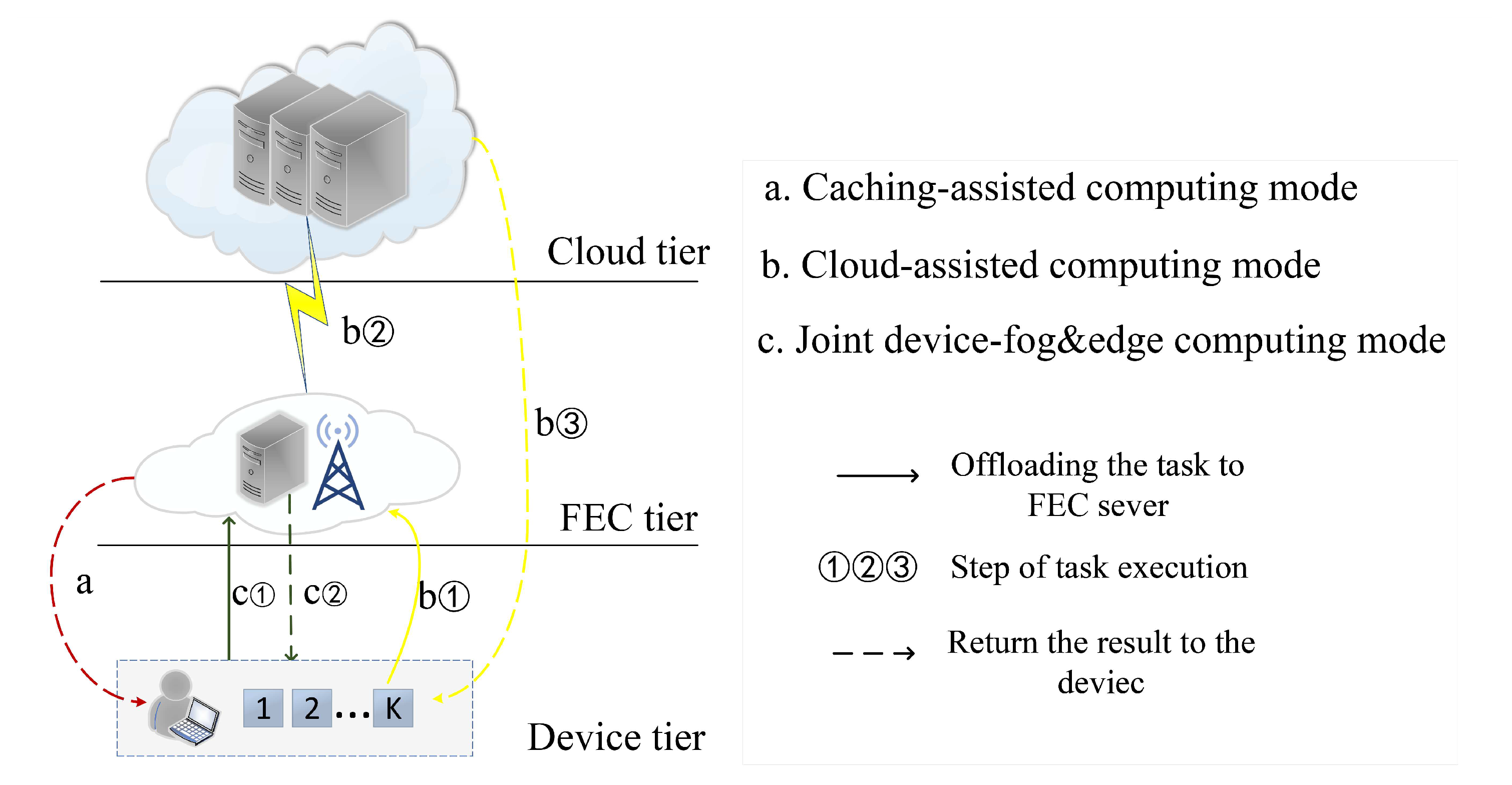
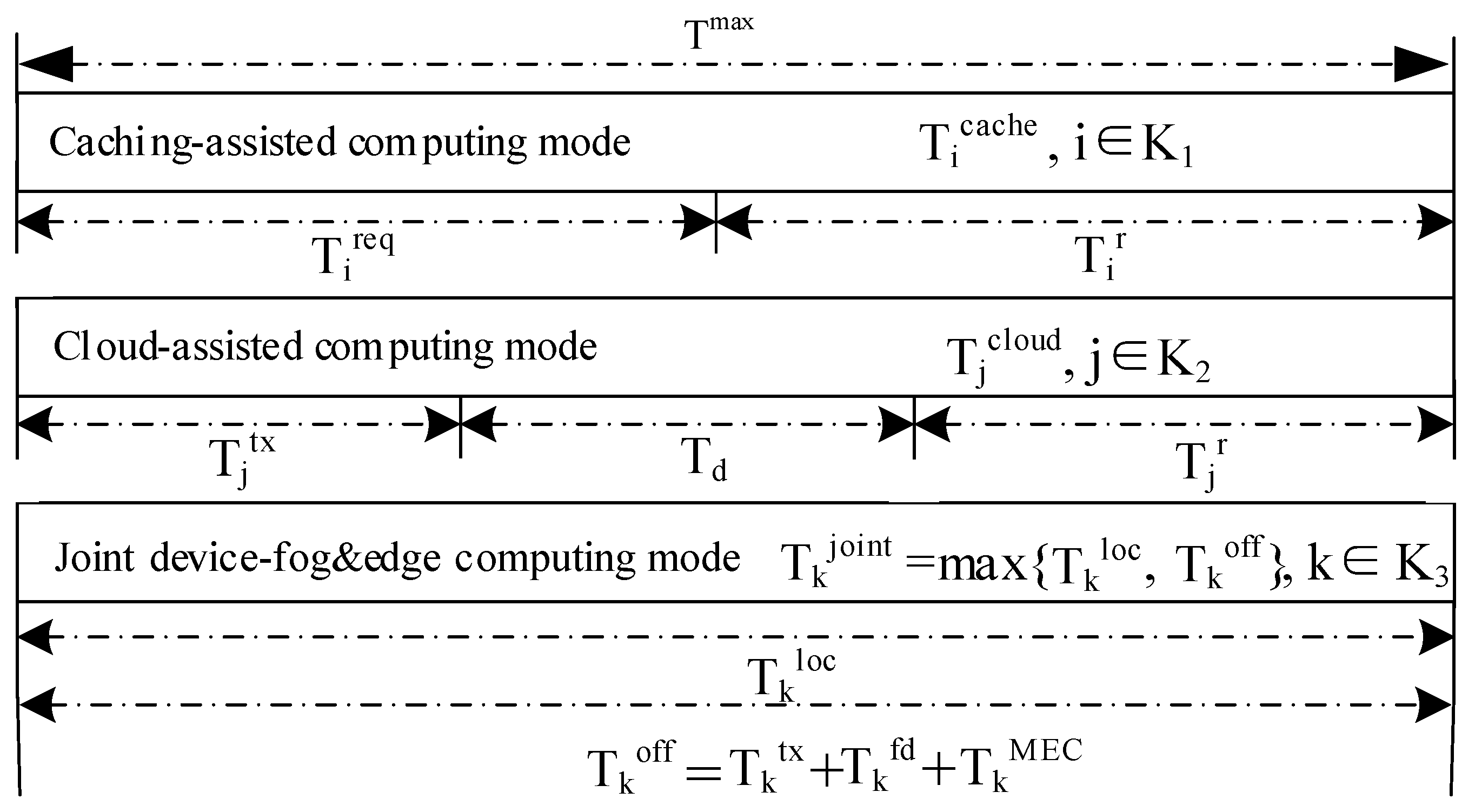

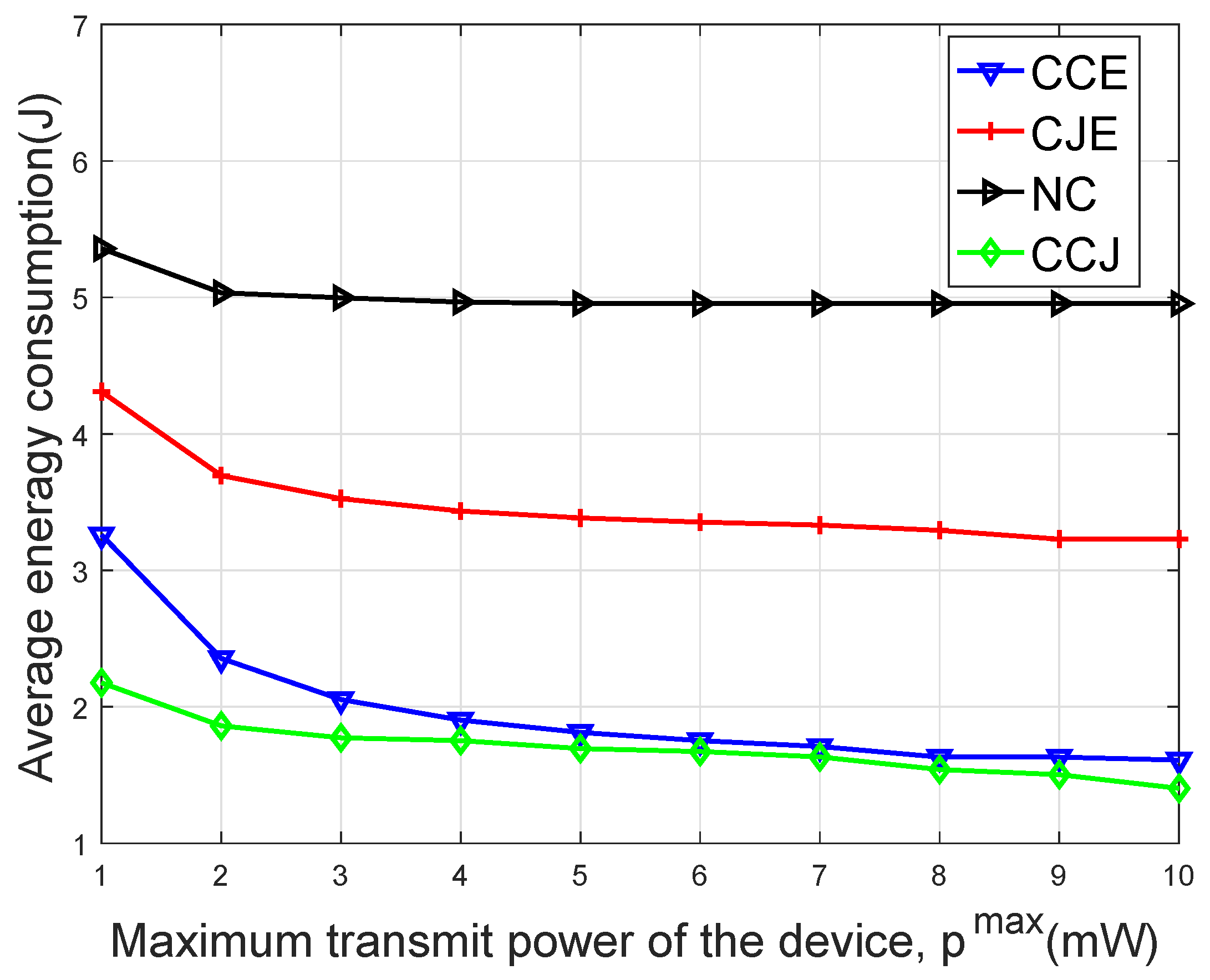
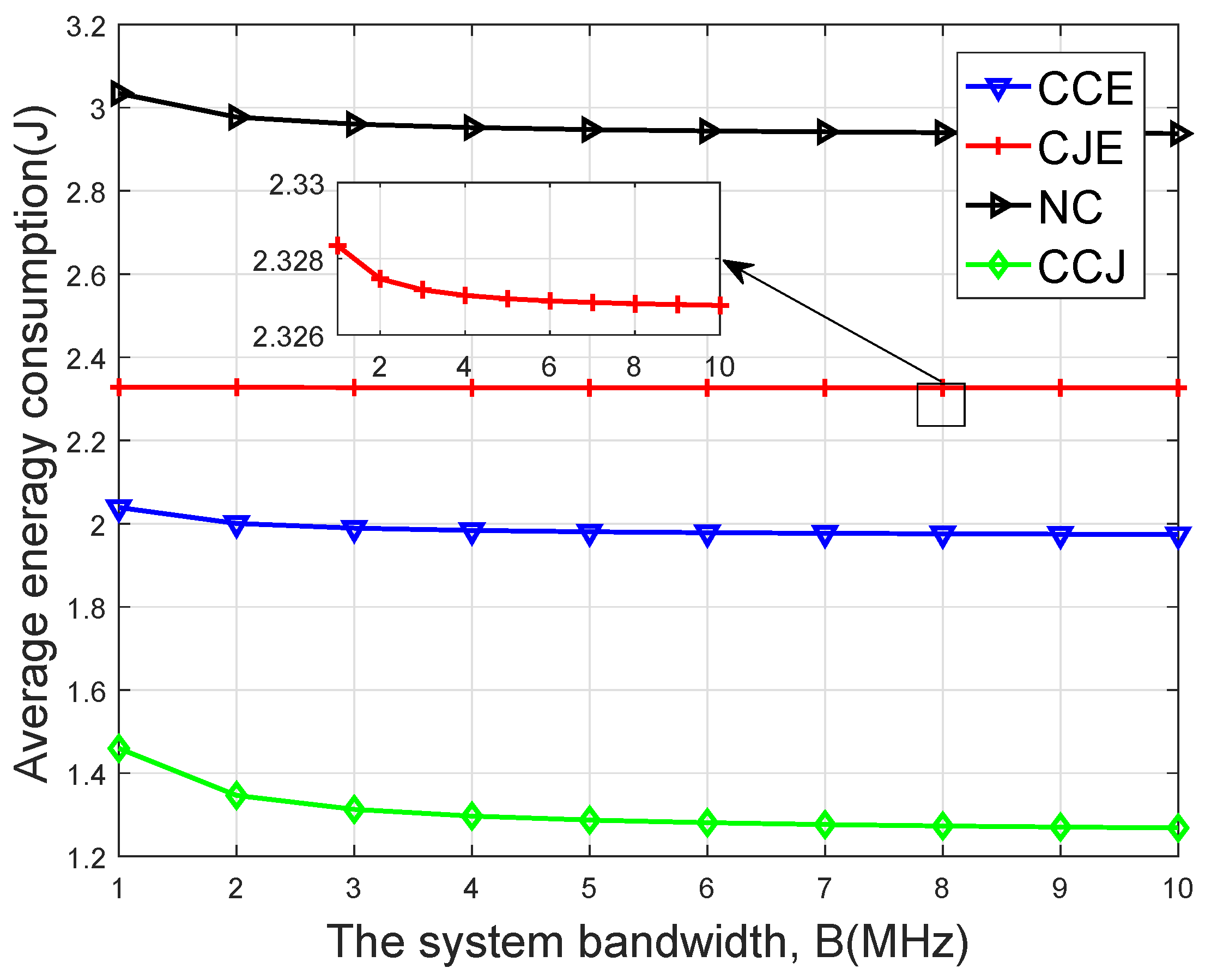
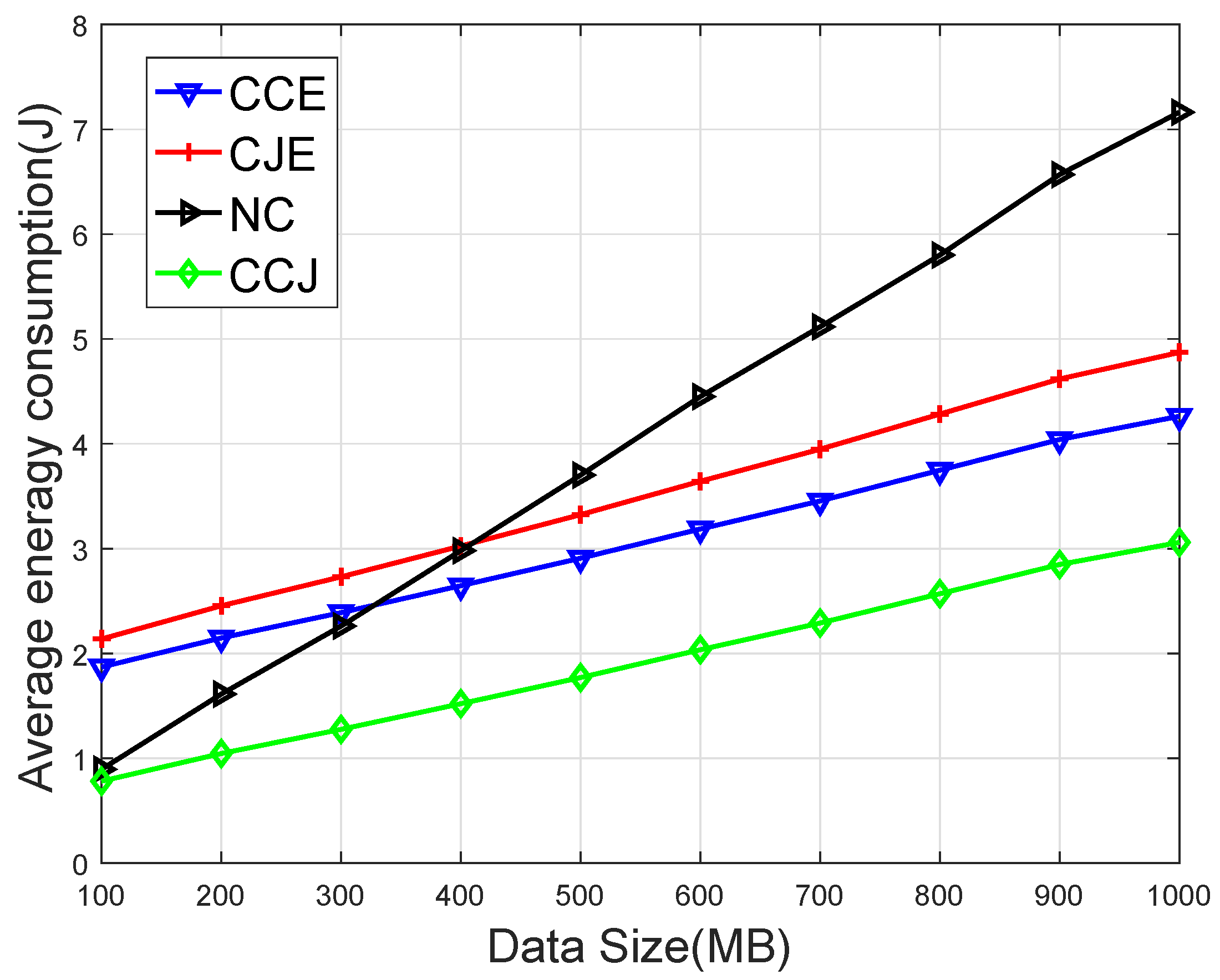
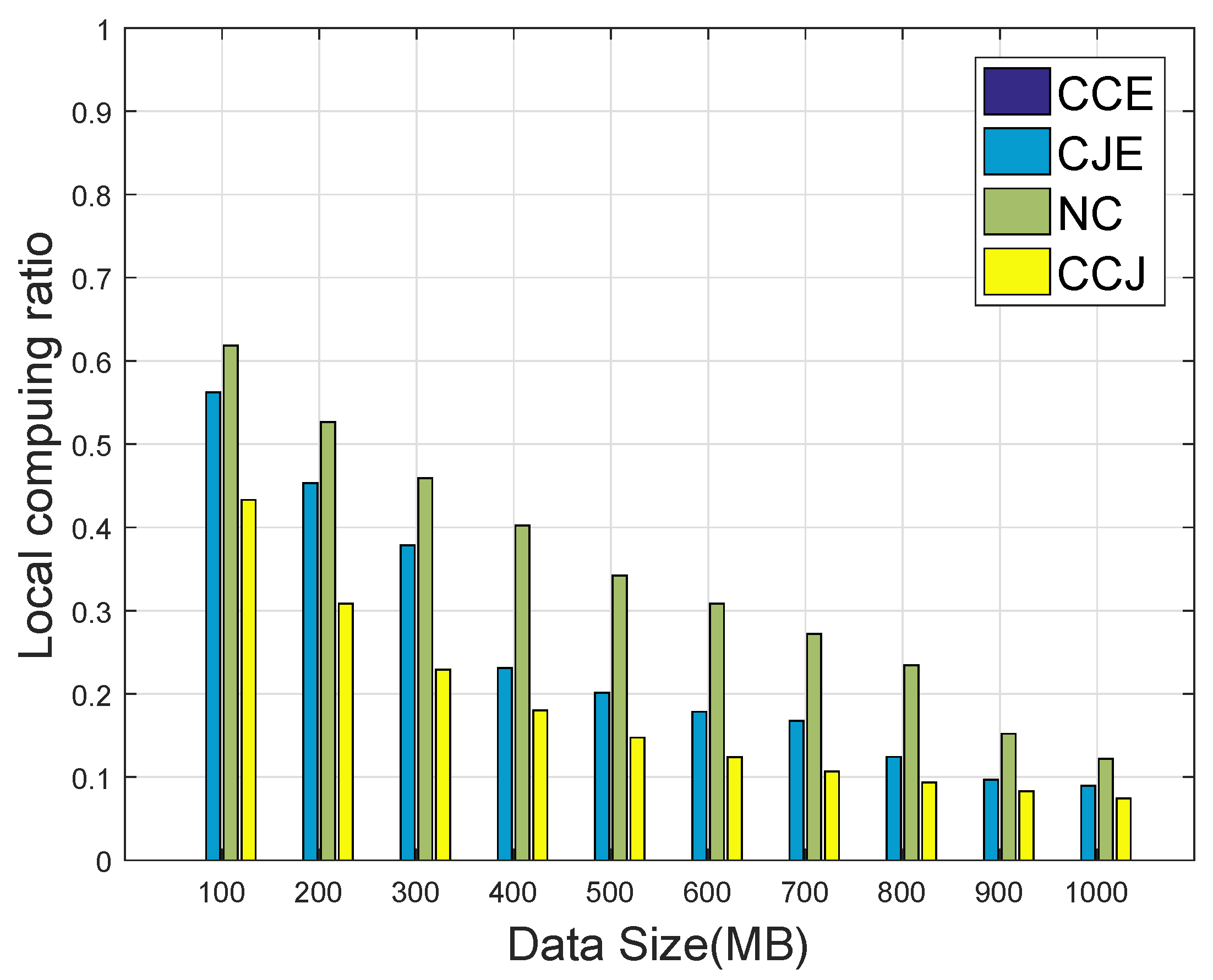
© 2020 by the authors. Licensee MDPI, Basel, Switzerland. This article is an open access article distributed under the terms and conditions of the Creative Commons Attribution (CC BY) license (http://creativecommons.org/licenses/by/4.0/).
Share and Cite
Fan, X.; Zheng, H.; Jiang, R.; Zhang, J. Optimal Design of Hierarchical Cloud-Fog&Edge Computing Networks with Caching. Sensors 2020, 20, 1582. https://doi.org/10.3390/s20061582
Fan X, Zheng H, Jiang R, Zhang J. Optimal Design of Hierarchical Cloud-Fog&Edge Computing Networks with Caching. Sensors. 2020; 20(6):1582. https://doi.org/10.3390/s20061582
Chicago/Turabian StyleFan, Xiaoqian, Haina Zheng, Ruihong Jiang, and Jinyu Zhang. 2020. "Optimal Design of Hierarchical Cloud-Fog&Edge Computing Networks with Caching" Sensors 20, no. 6: 1582. https://doi.org/10.3390/s20061582
APA StyleFan, X., Zheng, H., Jiang, R., & Zhang, J. (2020). Optimal Design of Hierarchical Cloud-Fog&Edge Computing Networks with Caching. Sensors, 20(6), 1582. https://doi.org/10.3390/s20061582




